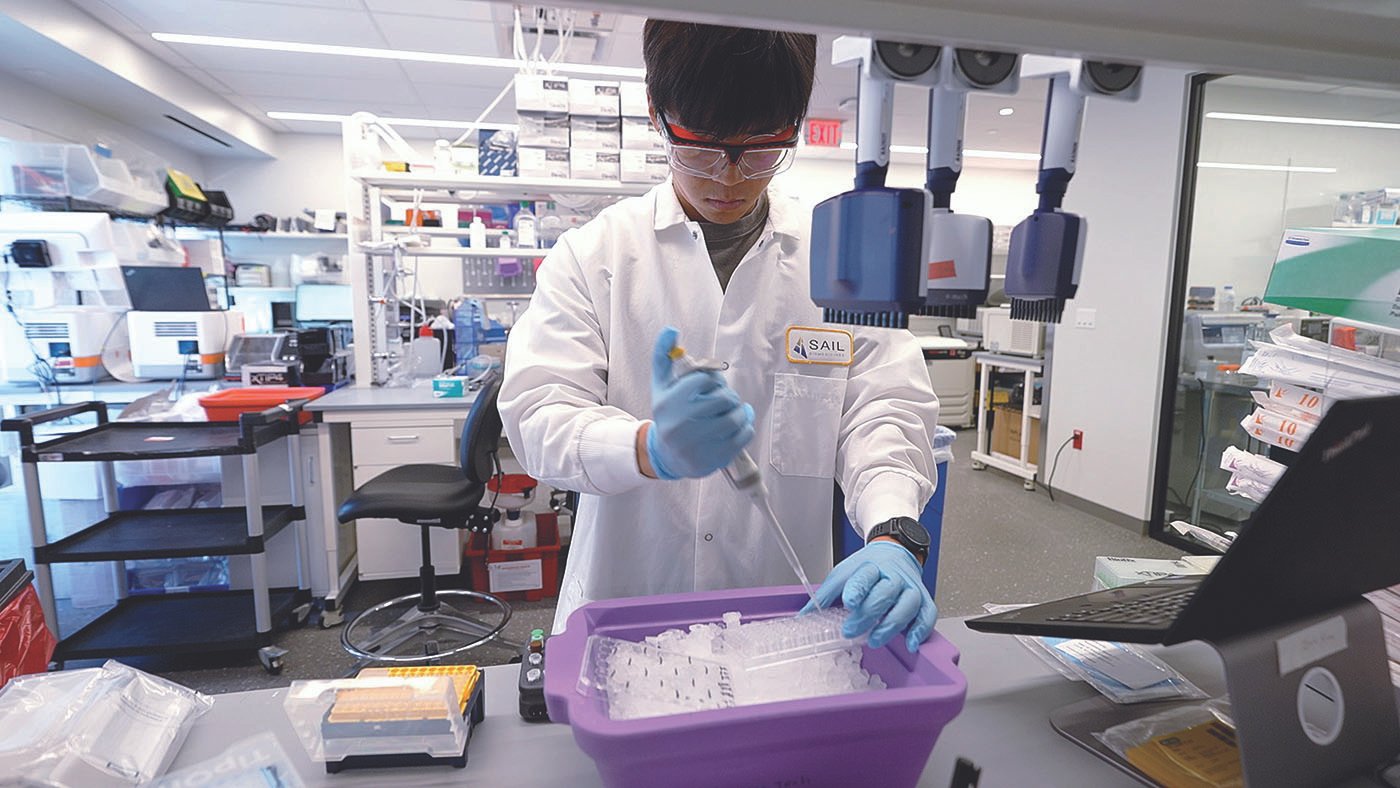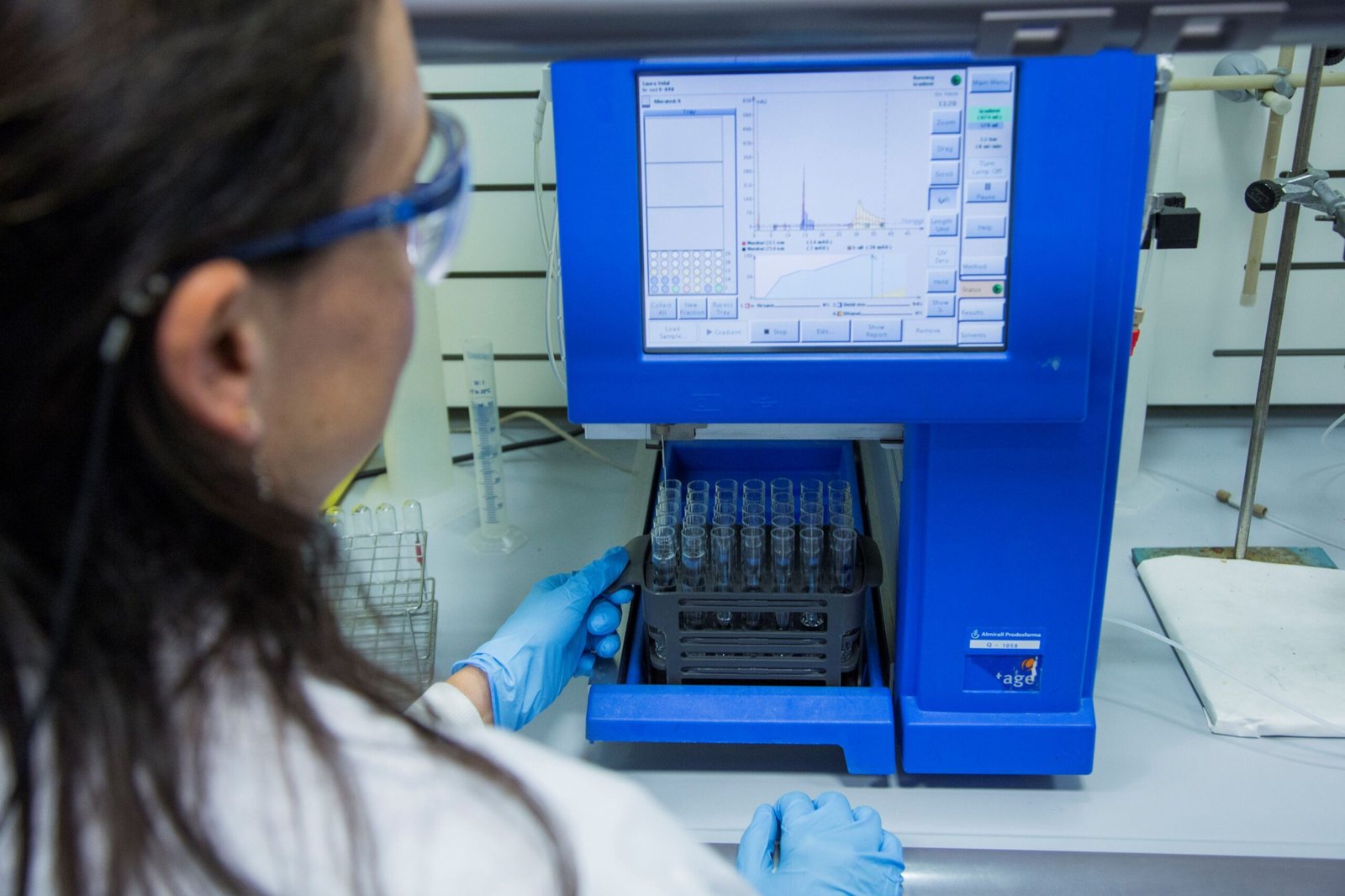The use of RNA is a promising approach for a growing range of therapeutics and vaccines, but overcoming a few challenges would enable it even further. Stability and persistence in the body are particular issues that, when coupled with the need to deliver the RNA therapeutic directly to the targeted cells or tissue, make it difficult for biomanufacturers to optimize.
Circular RNA may be part of the solution. Because circular RNA has no ends to degrade—unlike linear RNA—the molecule is more stable and its half-life is extended.
Endless RNA (eRNA
(eRNA ), developed by Sail Biomedicines, takes circular RNA a step further by designing in programmability and tight targeting. Incorporating generative artificial intelligence (AI) into the design stage enhances designers’ abilities to select and prototype the best options from gargantuan quantities of data. As a result, scientists can control how much protein the eRNA makes and for how long.
), developed by Sail Biomedicines, takes circular RNA a step further by designing in programmability and tight targeting. Incorporating generative artificial intelligence (AI) into the design stage enhances designers’ abilities to select and prototype the best options from gargantuan quantities of data. As a result, scientists can control how much protein the eRNA makes and for how long.
“You don’t necessarily have that with modified messenger RNA,” Kerry Benenato, PhD, Sail’s chief platform officer, says. “The eRNA, delivered in nanoparticles, is still transient—it is not permanently changing cells,” she adds.
Benenato anticipates dosing cycles of four-week intervals, rather than the two weeks that are usual for linear RNA therapeutics currently in clinical development. “We’re still trying to see how far we can push it as we continue to evolve the platform.”
Moving in new circles
“Lipid nanoparticles are really good at going to the liver—a common target—but we need our particles to do different things,” Benenato insists. Sail’s current pipeline targets immune cells and hepatocytes, as well as systemic and local delivery targets.

Chief Platform Officer
Sail Biomedicines
The basic strategy is simple, she says. “The body is going to cure itself. You just need to give it the message, and put (that message) in the right place…which is the complex piece.”
“When I came into this field in 2014, RNA-based therapeutics were a crazy idea. Since then, we’ve witnessed revolutionary advances. What it comes down to is that RNA is really powerful, but it can’t do everything,” Benenato cautions.
“The tunability of our eRNA gives it features—like extended dosing—that will allow us to go in different directions (than modified messenger RNA therapeutics),” she continues. “In my mind, it’s not just a better mRNA, it’s a unique entity that has its own utility and use. Our eRNA is yet another tool in our toolbox.”
One of this new construct’s key features is its RNA internal ribosome entry sites (IRES). These IRES sites allow translation to occur independently of caps, so ribosomes can bind directly to sites within the RNA, enabling translation of the amino acid sequence. Consequently, scientists can use this mechanism to change the functionality of the RNA by altering the selectivity or expression levels in various cell types. This also makes it possible to express multiple proteins per transcript.
Looping in nature’s intelligence
Sail is looking closely at nature to identify “highly selective and non-immunogenic delivery mechanisms,” Benenato says. “Plants have evolved with us, so, as we think about (delivery vehicles) with very low immunogenicity, this is a good place to start.” To do this, Sail scientists built a high-throughput, high-diversity screening platform “to explore what those chemistries can drive. Then we use our AI to interrogate them,” and use those results to compose a particle.
“I think we’ve reached the limit of what we can do in terms of rational design,” Benenato says. “AI is key to solving this problem.”
In the Flagship Pioneering orbit
In 2023, Flagship Pioneering created Sail Biomedicines from two of its portfolio companies—Laronde, which pioneered eRNA, and Senda Biosciences, which leveraged natural nanoparticals—and added AI expertise.
Integrating those companies and their platforms has been the biggest challenge so far, Benenato says. Successfully developing any of the individual components of a therapeutic—the molecule, delivery, or AI elements—is pointless unless the other pieces fit, she points out. “It’s all about bringing them together.”
The other challenge, she says, is to choose a therapeutic area on which to focus. The possibilities “are infinite in terms of what we can do with this technology.”
The first 18 months following Sail’s formation involved a fair bit of strategic reorganization to ensure it had the right team and resources. That included bringing on an AI team—headed by Rajesh Ramaswamy, PhD, senior vice president and head of machine learning and artificial intelligence strategy—to transition molecules from discovery to engineering.
Additionally, earlier this year, founding CEO Guillaume Pfefer, PhD, stepped down from his position, and Stephen Berenson, executive chairman of the board and managing partner emeritus at Flagship, stepped up to fill that role during the executive search. “It’s been a really simple transition,” Benenato says.
Next: in vivo CAR T
Sail’s immediate focus is on autoimmune diseases. These manifest when an immune cell isn’t functioning, and the body turns on itself.
“We nominated our first development candidate in March,” Benenato says. Sail’s in vivo CAR T therapy is designed to reprogram the immune system directly. “We transform the T cell, which then clears out the non-functional B cells. When that happens, the immune system resets and begins making fresh, functional B cells,” she explains. Sail’s CAR T candidate encompasses a proprietary eRNA with a proprietary T-cell selective nanoparticle. The immediate focus is on advancing that candidate into the clinic.
Additional programs are in development for metabolic disorders, cystic fibrosis, enzyme replacement therapy, and malaria prevention.
Even at this early stage, Sail is thinking about manufacturing. With eRNA, “In a single manufacturing site, you can make an antibody, and you can make a vaccine,” Benenato adds. That lets companies pivot very quickly within their existing manufacturing facilities.
The company is also invested in establishing and expanding its strategic partnerships, like those with the Cystic Fibrosis Foundation (CFF), Pioneering Medicines, and the Gates Foundation. The projects with CFF and Pioneering Medicines use eRNA to encode a functional, full-length cystic fibrosis transmembrane conductance regulator (CFTR) protein for patients who do not respond to existing cystic fibrosis therapeutics or for whom existing therapeutics are not an option. The projects with the Gates Foundation are focused on malaria prevention and involve eRNA-based vaccine and antibody approaches.
Looking forward, Sail will continue to push to understand more about how eRNA functions in various cell types. “There’s definitely some selectivity there, as well,” Benenato acknowledges.
The post Bringing RNA-Based Therapies Full Circle appeared first on GEN – Genetic Engineering and Biotechnology News.




